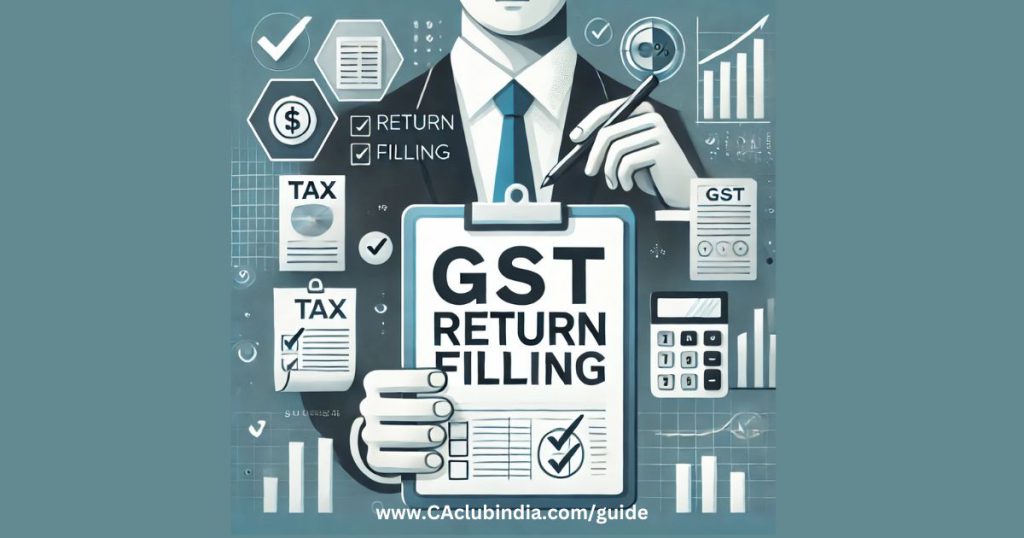GST return filing process has seen various changes since its introduction in 2017.

Introduction Of GST
Indirect taxation in India witnessed a paradigm shift on July 01, 2017, where a large number of Central & State indirect taxes were amalgamated into a single tax –Goods and Services Tax (GST). Goods and Service Tax (GST) is a destination-based type of single indirect tax levied on the supply of goods and services in India.
Then, the Union Finance Minister, P. Chidambaram, while presenting the Union Budget for 2006-2007, announced that GST would be introduced in April 2010.
However, in 2017, the Central GST legislations—CGST Bill, IGST Bill, UTGST Bill, and Goods and Services Tax (Compensation to States) Bill, 2017—were introduced in the Lok Sabha to introduce the Goods and Services Act with effect from 1 July 2017
What changes have occurred in the process of GST returns?
Although the GST Act was recently introduced, numerous amendments have been made to ensure the smooth functioning of indirect tax reforms in India, including GST returns. We had a few forms for filing returns when the GST was introduced. Now, we have forms that cater to every taxpayer’s needs.
GSTR-1
Details of Outward Supplies
GSTR 2
Details of inward supplies received from other taxpayers (currently
suspended)
GSTR-3
Details of outward and inward supplies, taxes paid and taxes liable(generated based on GSTR-1 & 2) (currently suspended)
The GST returns mentioned above were made available to taxpayers when the GST Act was first introduced. To facilitate the disclosure of details for each type of taxpayer, the following returns were introduced.
GSTR-1 IFF (Invoice Furnishing Facility)
Details of Outward Supplies that come under the QRMP scheme for uploading B2B invoices.
GSTR-2A (dynamic)
Auto-populated return containing details of Input Tax Credit (ITC).
GSTR-2B (static)
Auto-drafted Input Tax Credit (ITC) statement.
GSTR-3B
Details of outward and inward supplies, taxes paid and taxes liable.
GSTR-4
Annual Return to filed by taxpayers under the composition scheme.
GSTR-4A
Auto-generated return for composition taxpayers.
GSTR-5
Details of monthly returns filed by non-resident foreign taxpayers.
GSTR-5A
Details of monthly returns that are to be filed by OIDAR taxpayers.
GSTR-6
Details of monthly returns filed by Input Service Distributors (ISD).
GSTR-7
Details of monthly returns filed by those taxpayers who are required to deduct TDS.
GSTR-8
Details of monthly returns to be filed by E-Commerce operators who are required to collect TCS.
GSTR-9
Annual Return.
GSTR-9A
Annual Return to be filed by composition scheme taxpayers.
GSTR-9C
Annual Reconciliation Statement for those taxpayers whose turnover exceeds Rs. 2 crore.
GSTR-10
Final Return (in case of cancellation or surrender of GSTIN).
GSTR-11
Quarterly return for taxpayers who have been issued a Unique Identity Number (UIN) to claim GST refunds.
CMP-08
Quarterly return for composition taxpayers.
ITC-04
Details of goods manufactured which are sent to a job worker and received back.
The taxpayer is advised to go through all the forms and the requirements to file the returns based on their business, turnover and other factors. For any latest updates, circulars, and notifications on these forms, one can look into the official GST portal. It is advisable to seek guidance from a tax professional or a Chartered Accountant to make informed decisions regarding GST
FAQs
GST returns to be filed by all registered businesses, including sole proprietorships, partnerships, companies, and other entities with taxable supplies.
The major changes are simplification of ITC claims through GSTR-2B, introduction of the QRMP scheme, and mandatory e-invoicing for larger businesses.
ITC claims are now based on the GSTR-2B statement, which auto-populates eligible ITC based on suppliers’ GSTR-1 filings, reducing the chances of mismatch errors.